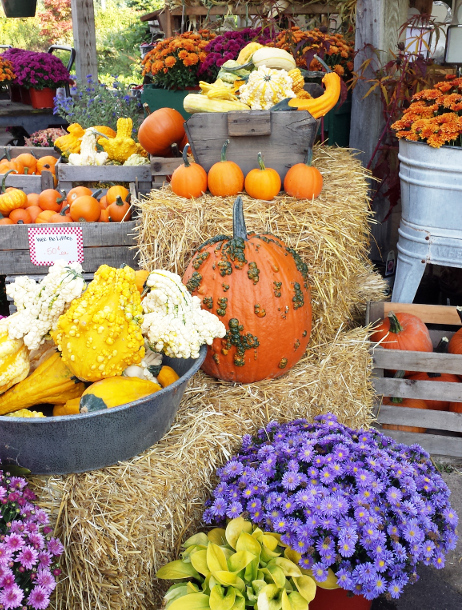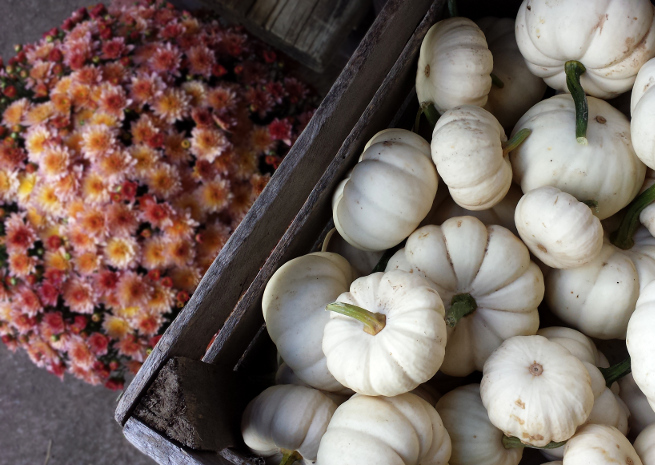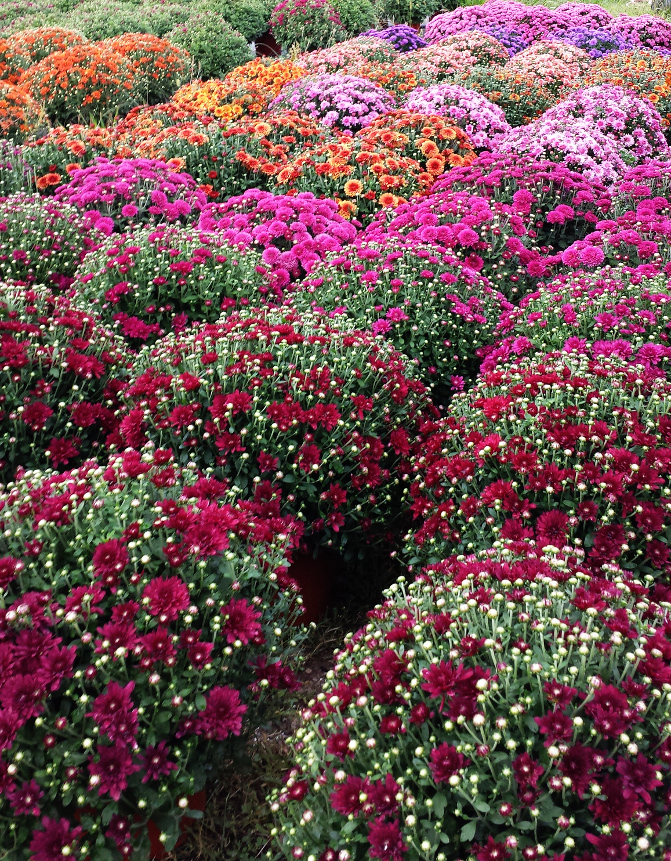This is such a beautiful and exciting time of year! Summer and Fall merge, in a glorious display of color.
You can find pumpkins, strawbales, gourds, apples, and apple cider at Kirby's. A great start to the Fall season!
We love growing a variety of pumpkins and gourds...
This giant gourd variety grows into some very interesting shapes and colors.
Little orange and white pumpkins are adorable, in just as many shapes and sizes.
Our large Mums are exploding with color!
And there are a lot of colors to choose from. Complement your mums with some interesting foliage plants from our perennial area. Perennials are all 25% off!
Produce Update
Tomatoes are at their peak, while peaches are beginning to come to a close. Right now we have Cresthaven peaches, which are a freestone variety that's excellent for baking, eating, freezing, and canning. We also Babygold, a clingstone variety that is our personal favorite for canning. They have excellent flavor, you don't have to peel them, and their firm flesh holds up well in a jar.
Apple Varieties Available now:
Honeycrisp, Autumn Crisp, Gingergold, McIntosh, Paula Red, and Jonamac
Other homegrown produce in season:
Sweet and Hot Peppers, Eggplant, Lettuce, Kale, Beets, Broccoli, Garlic, Cauliflower, Plums, Pluots, and Nectarines.
Locally grown produce in season:
Potatoes, Onions, Carrots, Parsnips, and Shiitake Mushrooms





























